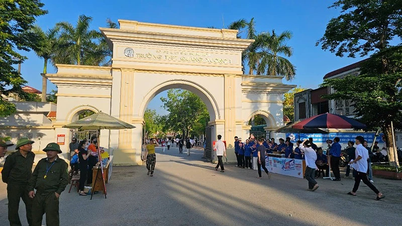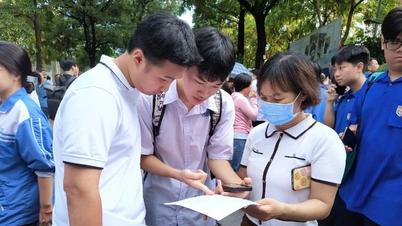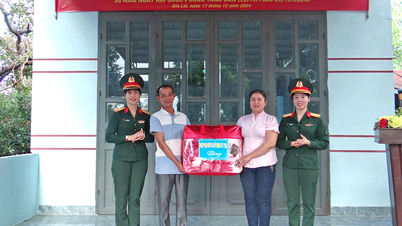Identify 2 groups of lymphoma
Doctor Kieu Thi Van Oanh, Center for Hematology and Blood Transfusion, Bach Mai Hospital said that lymphoma is not a single disease, but a general term for a group of cancers of the lymphatic system.
Lymphomas are basically divided into two main groups with different characteristics and prognoses.
The first group is Hodgkin lymphoma, characterized by the presence of an abnormal cell type called Reed-Sternberg cells. The disease usually progresses slowly, responds well to treatment, and has a good prognosis if detected early.
The other, and more common, group is Non-Hodgkin Lymphoma (NHL). This is an incredibly diverse group of diseases with more than 60 different subtypes.
This complexity makes the manifestation and progression of non-Hodgkin lymphoma very different, from slow-growing, latent forms (indolent) to very fast-growing, aggressive forms.
Accurately classifying lymphoma is a crucial step in choosing the most appropriate treatment option, which determines the success of the entire process.
Do not ignore the signs of swollen lymph nodes in the body
One of the biggest challenges with lymphoma is that the early symptoms are often vague and nonspecific, making it easy for people to ignore them. Listening to and recognizing changes in your body early can make a huge difference.
The most common and easily recognizable symptom is painless lymph nodes. These may appear in the neck, armpits, or groin. These nodes are firm, painless to the touch, and tend to get larger over time.
In addition, medical experts pay special attention to a trio of important warning symptoms, often referred to as "B symptoms", including: Prolonged fever of unknown origin, night sweats that soak clothes and bed, and unexplained weight loss (loss of more than 10% of body weight within 6 months).
In addition, the patient may also experience other symptoms such as unexplained persistent fatigue, persistent itching of the skin all over the body, cough or difficulty breathing (if the lymph nodes compress the airway in the mediastinum), abdominal pain or a feeling of fullness, bloating (if there are enlarged lymph nodes in the abdomen or an enlarged spleen).
Doctor Oanh shared that many patients come to the hospital in the late stages: lymph nodes in many places, large lymph nodes, infiltrating organs. The reason is that the lymph nodes are not swollen or painful, often causing discomfort to the patient.
Therefore, Dr. Oanh recommends that people should never be subjective with any abnormal tumor or lymph node in the body, especially when it persists and is accompanied by systemic symptoms.
According to Dr. Oanh, currently, targeted and personalized treatment brings excellent treatment results for patients.
Accordingly, chemotherapy combined with monoclonal antibodies remains the cornerstone in many regimens, but new generation drugs and combination formulations have helped increase the effectiveness of killing cancer cells while minimizing unwanted side effects.
A major breakthrough has been the advent of targeted therapy, which attacks specific molecules on the surface of cancer cells, sparing healthy cells and improving treatment effectiveness.
More recently, new immunotherapy is showing great hope. Instead of directly attacking the tumor, this method "awakens" and "trains" the patient's own immune system to recognize and destroy malignant cells on its own.
Therapies such as immune checkpoint inhibitors or CAR-T cell therapy are opening up opportunities for survival even in complex, refractory cases. In addition, stem cell transplantation remains an important option for high-risk or relapsed patients, helping to rebuild a healthy blood-forming system.
According to Dr. Van Oanh, in treatment, based on the type of lymphoma, disease stage, molecular biological characteristics and the patient's physical condition, the doctor chooses a specific treatment plan.
Source: https://nhandan.vn/nhan-dien-dau-hieu-mac-benh-u-lympho-post888881.html


![[Photo] General Secretary To Lam receives Australian Ambassador to Vietnam Gillian Bird](https://vphoto.vietnam.vn/thumb/1200x675/vietnam/resource/IMAGE/2025/6/26/ce86495a92b4465181604bfb79f257de)

























![[Photo] Candidates take the first graduation exam with the new Literature topic](https://vphoto.vietnam.vn/thumb/1200x675/vietnam/resource/IMAGE/2025/6/26/dfded9e317554c25a3e26defe672ebb7)






































































Comment (0)